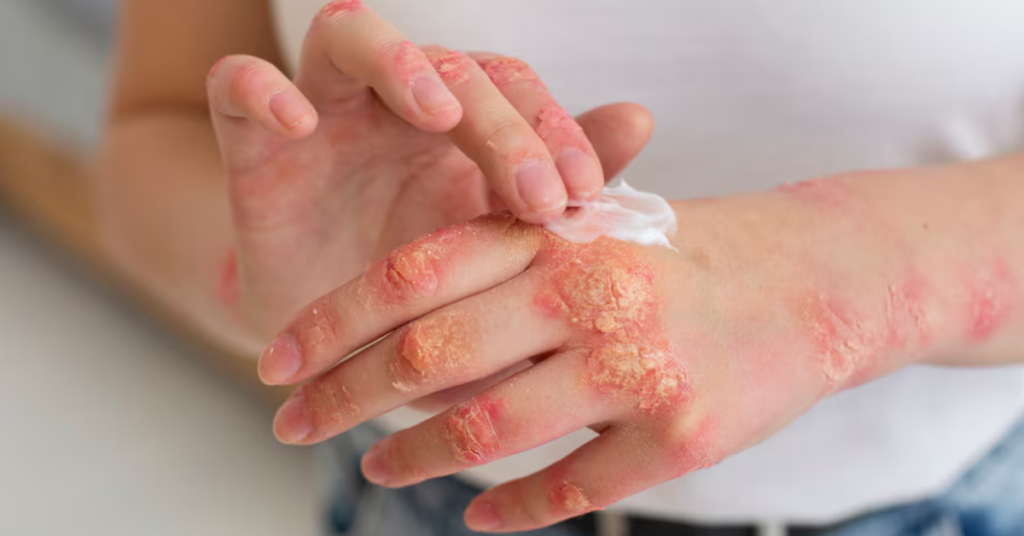Blisterata is a complex dermatological disorder characterized by the formation of blisters on the skin’s surface. These blisters can vary in size, location, and severity, and their appearance may be spontaneous or triggered by external factors. This article provides an in-depth look at Blisterata, including its causes, symptoms, diagnosis, treatment, and management strategies.
What is Blisterata?
Blisterata is a dermatological condition where blisters form on the skin due to various underlying factors. These blisters are fluid-filled sacs that can appear on any part of the body and can cause significant discomfort, itching, and pain. Understanding Blisterata is essential for effective management and care.
Symptoms of Blisterata
The primary symptom of Blisterata is the formation of blisters on the skin. These blisters can vary in appearance and may include:
Fluid-Filled Sacs: Blisters are typically filled with clear or slightly yellow fluid.
Redness and Inflammation: The skin around the blisters may be red and inflamed.
Itching and Discomfort: Affected individuals often experience itching and discomfort.
Pain: In some cases, blisters can be painful, especially if they rupture or become infected.
Causes of Blisterata
Blisterata can be caused by a variety of factors, which can be broadly categorized into genetic, environmental, and autoimmune causes.
Genetic Factors
Certain genetic conditions can predispose individuals to Blisterata. For example:
Epidermolysis Bullosa (EB): A group of genetic disorders that cause the skin to be extremely fragile, leading to blister formation.
Inherited Blistering Disorders: Some individuals may inherit conditions that make their skin more susceptible to blistering.
Environmental Triggers
Environmental factors can also trigger Blisterata. These include:
Trauma or Friction: Physical injury or repeated friction can lead to blister formation.
Exposure to Irritants: Chemicals, allergens, or harsh environmental conditions can cause skin reactions and blistering.
Sunburn: Severe sunburn can lead to blistering of the skin.
Autoimmune Disorders
Autoimmune conditions can cause the immune system to attack the skin, leading to blister formation. Examples include:
Pemphigus Vulgaris: An autoimmune disorder where antibodies target the skin’s cells, causing blisters and sores.
Bullous Pemphigoid: Another autoimmune condition characterized by the formation of large, tense blisters.
Diagnosis of Blisterata
Diagnosing Blisterata involves a comprehensive evaluation by a dermatologist. The process typically includes:
Medical History
A thorough medical history is essential for diagnosing Blisterata. This includes:
Personal Medical History: Information about past health conditions, medications, and any previous skin issues.
Family Medical History: Any genetic conditions or hereditary disorders that might contribute to the disorder.
Physical Examination
During a physical examination, a dermatologist will assess the appearance and distribution of the blisters. They may also look for:
Blister Characteristics: Size, color, and content of the blisters.
Associated Symptoms: Redness, inflammation, and pain.
Laboratory Tests
Additional tests may be conducted to confirm the diagnosis, including:
Skin Biopsy: A small sample of skin is taken and examined under a microscope to identify any underlying abnormalities.
Blood Tests: Blood tests can help identify autoimmune markers or other systemic conditions.
Treatment Options for Blisterata
Treatment for Blisterata depends on the underlying cause and severity of the condition. Common treatment strategies include:
Topical Treatments
Corticosteroids: These can help reduce inflammation and itching associated with Blisterata.
Antibiotic Ointments: If there is a risk of infection, topical antibiotics may be prescribed.
Systemic Treatments
Oral Medications: In severe cases, oral medications such as corticosteroids or immunosuppressants may be used.
Antiviral Drugs: If an infection is causing the blisters, antiviral medications might be prescribed.
Wound Care
Proper wound care is essential to prevent complications and promote healing. This includes:
Cleaning the Area: Gently cleaning the affected area to remove any debris and reduce the risk of infection.
Dressing: Using appropriate dressings to protect the blisters and promote healing.
Management Strategies for Blisterata
Managing Blisterata involves both medical treatment and lifestyle adjustments. Effective management strategies include:
Avoiding Triggers
Identify and Avoid Triggers: Avoid known irritants or environmental factors that can trigger blister formation.
Protect the Skin: Use protective clothing or barriers to reduce friction and irritation.
Pain and Symptom Management
Pain Relief: Over-the-counter pain relievers or topical analgesics can help manage discomfort.
Itch Relief: Antihistamines or soothing lotions can provide relief from itching.
Monitoring and Follow-Up
Regular Check-Ups: Regular visits to a dermatologist to monitor the condition and adjust treatment as needed.
Self-Monitoring: Keeping track of symptoms and any changes in the skin can help in managing the condition effectively.
Living with Blisterata
Living with Blisterata can be challenging, but with the right approach, individuals can manage their symptoms and improve their quality of life. Considerations include:
Emotional Support
Counseling: Seeking support from a mental health professional can help individuals cope with the emotional impact of living with a chronic skin condition.
Support Groups: Joining support groups or online communities can provide valuable information and emotional support.
Lifestyle Adjustments
Skin Care Routine: Adopting a gentle skincare routine to minimize irritation and promote skin health.
Healthy Diet: Maintaining a balanced diet to support overall health and well-being.
Conclusion
Blisterata is a dermatological disorder characterized by the formation of blisters on the skin’s surface due to various underlying factors. Understanding the causes, symptoms, diagnosis, treatment, and management of Blisterata is crucial for effective care and improved quality of life. With proper medical treatment, lifestyle adjustments, and ongoing support, individuals affected by Blisterata can manage their condition and maintain their overall well-being.







